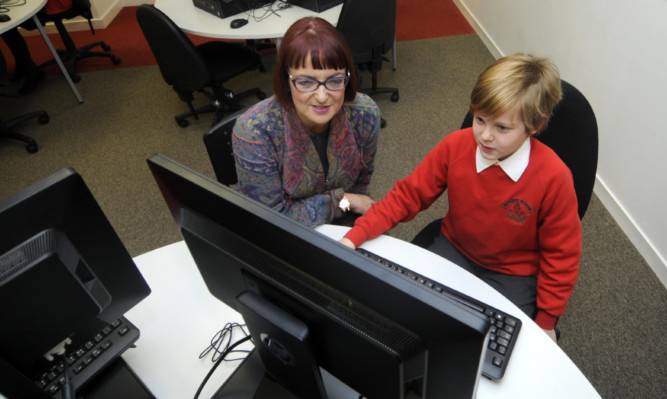Dundee will play host to a new computer coding school designed to help Scotland blossom into a “world-class digital nation” over the next four years.
The Code Academy, run by Dundee and Angus College, will reach out to primary and secondary school children, university students and local creative industries in an attempt to harness creativity among young Taysiders.
Innovations such as holiday computer code camps and code workshops will be on offer to children along with short courses for those teaching in schools.
Having already secured the support of public and private employers, the Code Academy is now backed by the Scottish Government, with Education and Lifelong Learning Secretary Angela Constance visiting D&A College’s Gardyne Campus to witness the initiative first-hand.
Ms Constance said: “Coding is a very useful skill to learn, but the Code Academy also creates a wonderful opportunity to show all of the young people and children involved with it the huge variety of jobs available in our technologies industries.
“There is a continuing demand for software developers and other IT professions which are careers that girls and young women have traditionally been less likely to pursue to the highest level than their male peers.
“By introducing children to coding and the associated technology earlier, we can help them feel more comfortable around it; more confident to experiment and try new things and lay strong foundations for a talented, future workforce in the digital industries.”
The Cabinet secretary’s backing comes alongside that of the world’s leading integrated IT service management platform provider, LogicNow the initiative’s lead partner.
Simon Hewitt, head of creative industries at D&A College, is convinced that the Code Academy, the only programme of its kind at present, will deliver highly-skilled individuals to fill positions in Scotland’s fastest growing industry.
He said: “Published figures estimate as many 84,000 people are already working in Scotland’s digital technologies but the rapid growth of this £4 billion industry has stretched the supply chain in terms of recruitment with many employers voicing concerns about finding the right people.
“It is estimated that the sector will need an extra 11,000 new recruits each year to meet current and future demands and our new Code Academy should help deliver these numbers.”
The academy will offer sessions at primary school to introduce basic skills, weekend and holiday camps and Code Workshops, with those taking part moving on to senior phase courses in software and games development.
